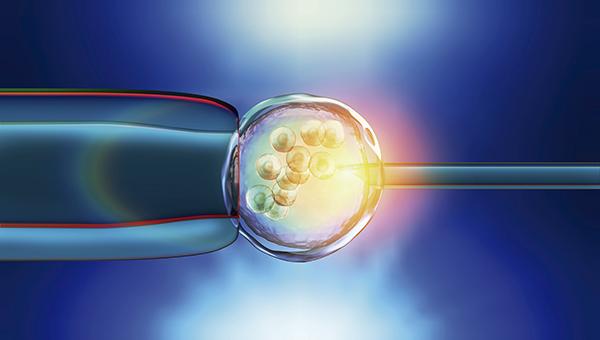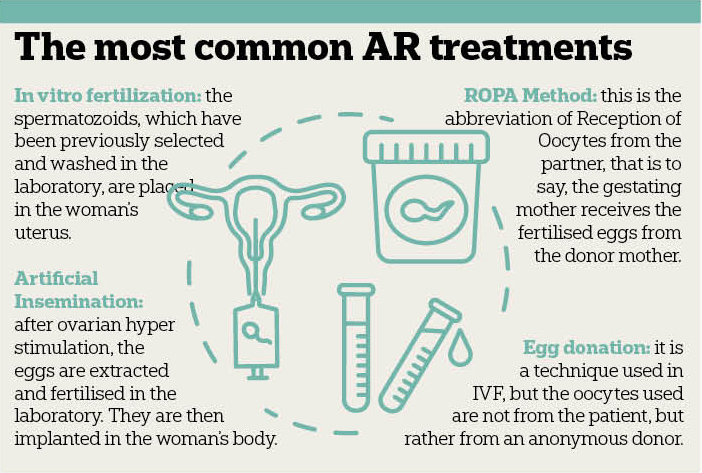
Technology, science and success stories all promote assisted reproduction
Changes in society, with new family models and later pregnancies, all have an impact on the fertility sector. The assisted reproduction clinics are experiencing a boom, thanks to the scientific advances and techniques that increase the success rates of the different treatments and alternatives that they can offer.
Trying to get pregnant is usually, in most cases, an experience full of ups and downs. In 2020, 338,435 babies were born in Spain, although the country continues to have a low birth rate. Why? There are many, varied reasons for this. Therefore, the role of reproductive medicine has become essential. The impossibility of becoming parents is often marked by the infertility of one of the members of the couple. Although the spectrum has been extended and the new family models existing today are also significant participants in this medical speciality.
According to different studies, sterility affects 15% of the population in western countries. The advanced age of the women is usually one of the main causes behind this increase in sterility. Currently, in Spain the average age for having a first child is over 32 years, which makes it obvious that the women who come to the assisted reproduction clinics are older than those who visited one 10 years ago. And this age plays a decisive role when preserving fertility. This delay in motherhood is influenced by different factors: the full incorporation of women to the work market, the lack of economic or sentimental stability. All of this can cause a reduction in the possibilities of gestation. But, there is also an increase in patients without a partner or families with difficulties when looking for a second child. Added to these situations are the new family models in which assisted reproduction techniques (AR) are the only way to conceive a longed-for baby.
The clinics’ roles
According to figures from the Spanish Fertility Society (SEF in its Spanish acronym), in just over 15 years, the amount of Spanish clinics specialising in fertility has risen from 190 to 300 centres. The sustainability of the sector can be seen in its figures: in 2020, the private AR centres generated business of 460 million euros. These clinics currently offer different treatments the efficiency (and personification) of which are increasingly higher thanks to the scientific and technological advances. Currently, a patient who visits the assisted reproduction clinics is better informed, although normally, misinformed. For this reason, it is important for trust to be placed in qualified professionals, laboratories with the latest advances and centres with high success rates. Today, the challenge of these specialists lies in seeking greater genetic safety, greater flexibility and less invasive treatments.
Reproductive tourism
Data from the Ministry of Health corroborate that 9% of the babies in our country are the result of AR, which makes Spain into one of the countries at the head for this type of treatments. In fact, four out of every ten European couples choose Spain for a fertility treatment. The patients usually come from countries such as France, Italy or the United Kingdom, where the legislation on this subject is less developed. Accordingly, for example, the most recent report by the Ministry of Health and the SEF indicates that 3,500 French people came to Spanish clinics in 2018 to receive assisted reproduction treatments.
Spain is a reference both due to the number of clinics and the number of cycles, according the European Society of Human Reproduction and Embryology (ESHRE). And this is mainly due to the quality of the treatments and the professionals working in the field. This good reputation is partially endorsed by the legislation that allows any woman who wants to become a mother, between the ages of 18 and 50 years, to be able to achieve this. Surrogate motherhood and choice of gender are the only areas that are not permitted.
The impact of Covid-19
The impact of the Covid-19 pandemic on the birth rate can be clearly seen in most countries. The statistics and studies forecast that in Spain, this will drop between 5 and 10 points in 2021. It has already been confirmed that births dropped by 20% during December 2020 and January of this year. Many families postponed their search for a baby and for several months, the reproduction centres closed their doors and saw their services interrupted. From the decree of the state of alarm until the country reopened at the end of April 2020, the clinics did not carry out around 14,000 assisted reproduction cycles and, according to estimates by the Spanish Fertility Society and ASEBIR, this can be translated, 9 months on, into 4,000 fewer children in Spain.





